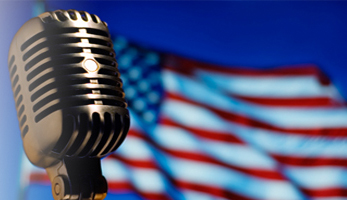
The Boston Marathon bombings showed America and the world once and for all that the 24-hour cable news network model is dead. Here are some of the cable coverage lowlights of the week:
First, the cable networks aired little else but the 1-minute or so video footage of the blast, over and over, with the anchors and their interviewees repeatedly talking about “legs blown off.”
Then came the speculation. With hours to fill, many cable (and broadcast) tv news anchors focused on running men and people on rooftops. And, as is often the case during major events, the cable news networks became a vanity parade, as guests like disgraced former New York City Mayor Rudolf Giuliani, disgraced former Bush Homeland Security Secretary Tom Ridge, and even disgraced Bush Attorney General Alberto Gonzales hit the airwaves to remind people they’re still around and looking to make some money.
Then came the erroneous reporting. CNN led the way, with John King and “contributor” Fran Townsend (proving she can do just as poor a job at CNN as she did as George W. Bush‘s Homeland Security Adviser), joined by Wolf Blitzer, both citing their own “source” or “sources” to say that an arrest had been made in the Boston Marathon bombing. This follows CNN’s reporting fiasco last year when the U.S. Supreme Court upheld, yes, upheld, the constitutionality of the Affordable Care Act’s individual mandate. Fox “News” would also deserve special mention for poor journalism and unsubstantiated conclusions, but in Fox’s case that would be redundant.
As many people have noted, the lone standout in this media frenzy seemed to be NBC News‘ Pete Williams, who not only resisted the jettisoning of journalistic standards that was taking place at the other networks, he did so in a calm, reasoned way, distinguishing himself from his overcaffeinated colleagues. How sad is it that, in the coverage of the Boston Marathon bombing, good journalism was the exception to the rule rather than the other way around? Oh, but we’re not done yet.
Then came the use of citizens as journalists. For example, the television networks aired amateur footage of the bombing itself, the police shootout several days later, and events in between. Perhaps the high point came when one neighbor was on the phone with a cable news network, reporting what he was seeing outside on the street, and then taking his laptop camera and simply pointing it out the window.
Not that there’s anything wrong with eyewitnesses filming or reporting what they see on the street or out the window, but then what do we need the cable news networks for? Plenty of eyewitnesses, perhaps some of the same ones interviewed on television, were on social media such as Twitter, reporting what they were seeing in real time. No tape delays, no waiting for producers to package it, no inane commentary from the television anchors, no commercial breaks. Indeed, even one of the Boston bombing suspects’ (alleged) tweets were available for all to see.
CNN, and, indeed, 24-hour cable television news, first became extremely well-known as it covered the “Baby Jessica” ordeal in 1987, when a Texas toddler fell into a well. A few years later, during the first Gulf War, CNN (and perhaps cable news) hit its zenith with exclusive coverage upon which even Pentagon officials relied. Does anyone doubt that, if the Baby Jessica event or even the next war occurred today, hundreds or thousands of amateur journalists would be on the scene, shooting video with their cell phones or iPads, tweeting live updates, and Googling many of the same facts that would be available to the news networks? These citizen journalists might be able to shout questions at officials with the best of them, and some of them could probably even read a court decision correctly.


